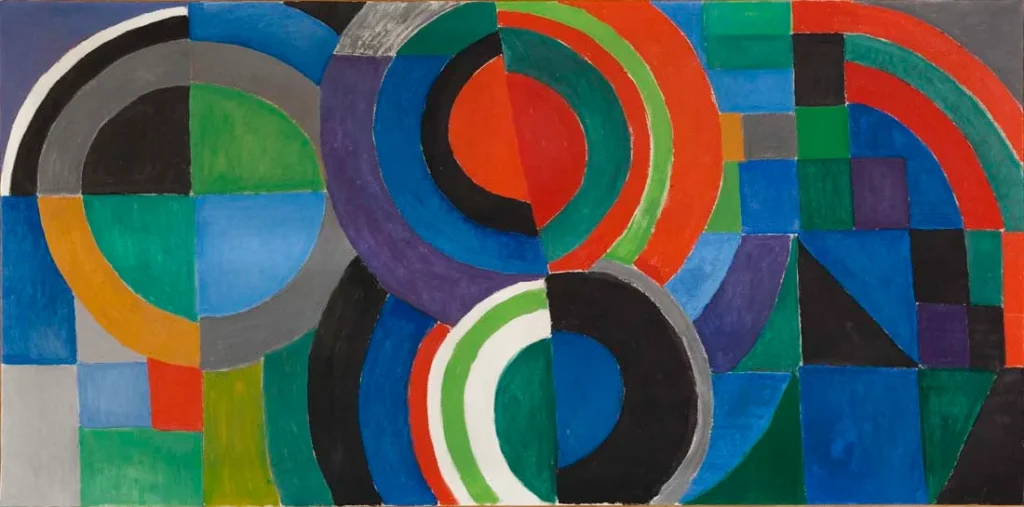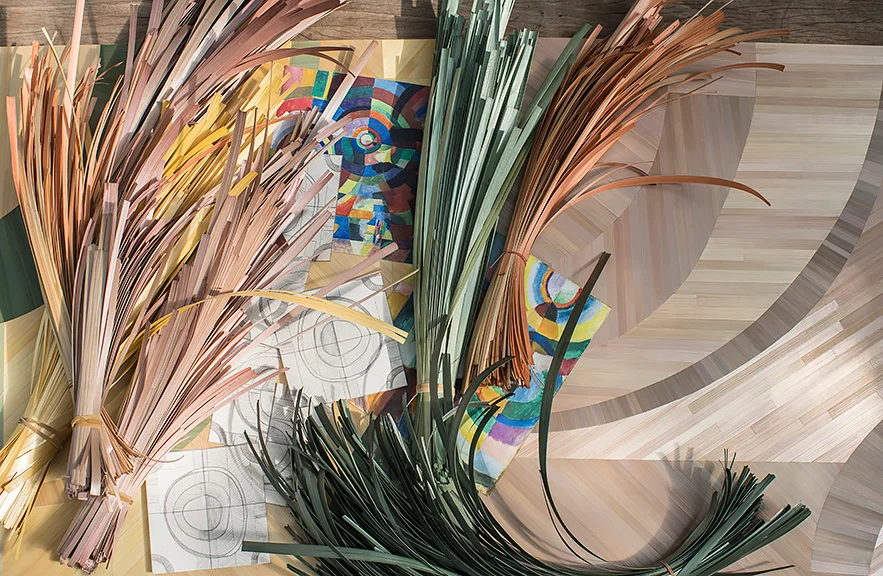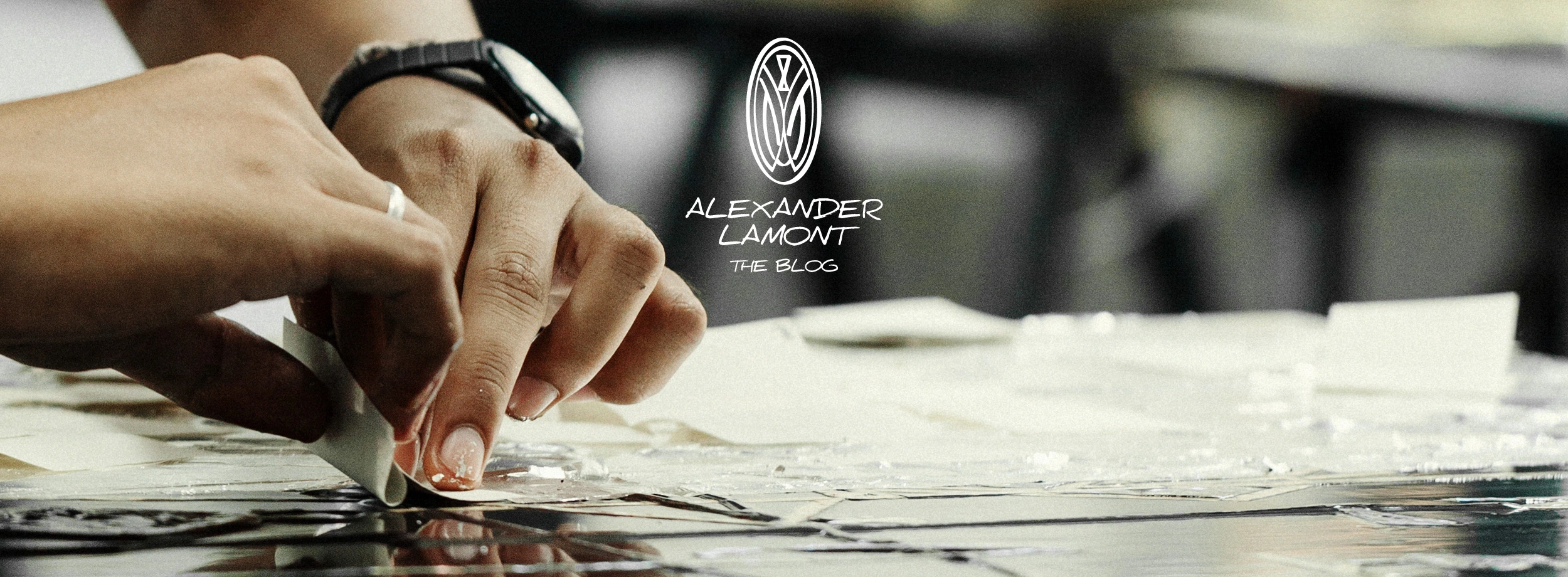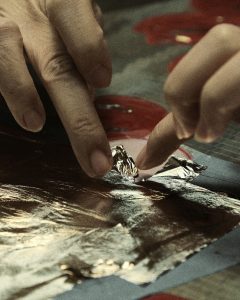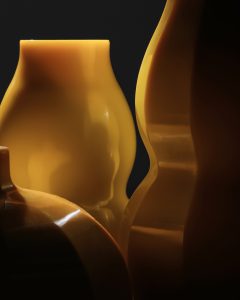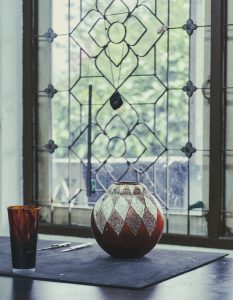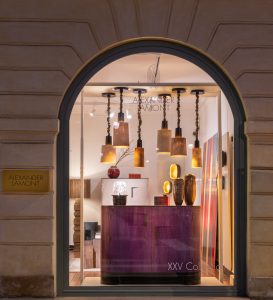This Fall Alexander Lamont launched new straw marquetry wall panels inspired by seminal artist, Sonia Delaunay. Forming part of his 2017 Le Mur Collection the three new designs demonstrate three unique approaches to the use of straw as a versatile, expressive and innovative material for wall coverings.
Sonja I and II designed by Antonio da Motta Leal and edited by Alexander Lamont feature strong abstract lines that bring painterly, enigmatic energy to the technique of straw marquetry. Sonja I and II pay tribute to the work of Sonia Delaunay, whose ground-breaking work of the 1920s and 30s extended to painting, textile design, fashion and stage set design. This is the story of this seminal artist’s work.

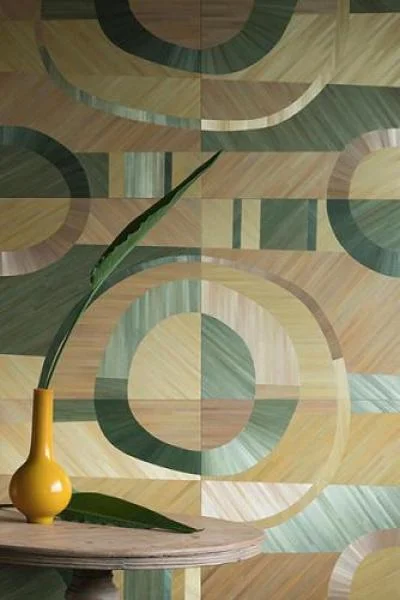
Sonja I and Sonja II Wall Panels in Straw Marquetry
Sonia Delaunay was born in Ukraine but spent most of her working life in Paris. With her husband Robert Delaunay and others, she cofounded the Orphism art movement, noted for its use of strong colours and geometric shapes. She was an artist who contributed hugely to modern design developing concepts of geometric abstraction and working towards the integration of art, fabrics, wall coverings, and clothing. Being adopted by wealthy relatives in St Petersburg in Russia, she received a privileged upbringing. She attended the Academy of Fine Arts in Karlsruhe and decided to move on to Paris. A young and enthusiastic painter, she was there impressed by the post-impressionist art of Van Gogh, Gauguin and Henri Rousseau and the Fauves including Henri Matisse and Derain.

This early fascination with colour would determine the rest of her career. Sonia gained entrance into the art world via exhibitions at her first husband’s art gallery Wilhelm Uhde. There she met second husband Robert Delaunay, who was a painter himself. The patchwork quilt shown here marked an important turning point in Sonia’s work. Made in 1911 for her son’s crib (now in the collection of the Musée National d’Art Moderne in Paris) the quilt was a spontaneous and expressive piece of work using geometry and color inspired by the Ukrainian patterns of her childhood. This inspired her to move away from perspective and naturalism in her art and towards abstract pattern and colour.
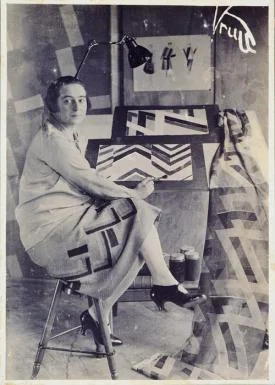
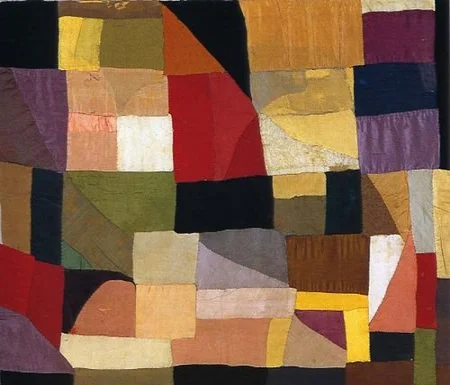
Sonia Delaunay in her textile design studio The Quilt Sonia Delaunay made for her son’s crib
The Delaunays’ friend, the poet and art critic Guillaume Apollinaire, coined the term Orphism to describe the Delaunays’ version of cubism in 1913. The movement that began as an offshoot of Cubism soon moved towards lyrical abstraction and the use of pure colour as a form of movement and expression. Sonia then illustrated famous poem books by Blaise Cendrar and became noticed on the Art Scene. Paul Klee was so impressed with her use of squares in her binding of Cendrars’ poem that they became an enduring feature in his own work.
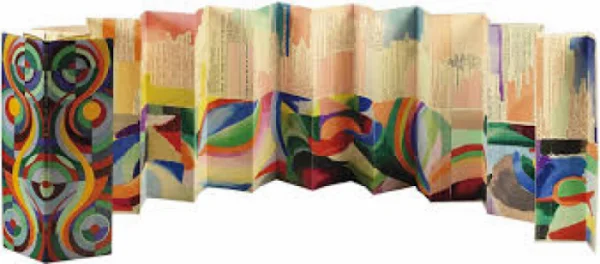
The Russian Revolution brought an end to the financial support Sonia received from her family in Russia, and a different source of income was needed. In 1917 the Delaunays met Sergei Diaghilev from Les Ballets Russes. Sonia designed her first costumes for his productions. She also started selling her designs for interior decoration and fashion and in the 1920’s Sonia Delaunay made clothes for private clients and friends, and created fabric designs using geometrical shapes and bold colours. The Simultane collection was born.
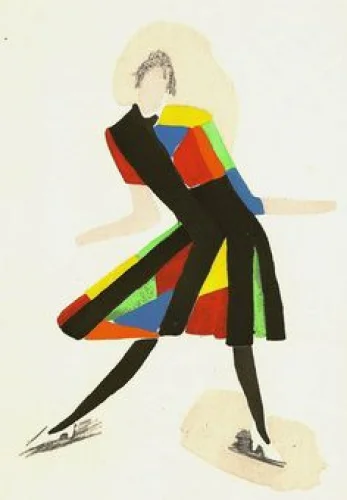
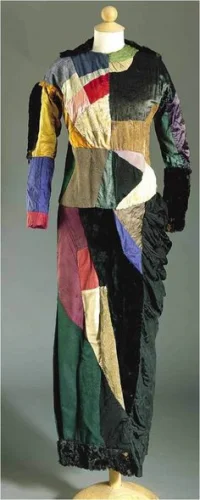
Costume design for Les Ballets Russes One of Sonia Delaunay’s fashion pieces
Sonia Delaunay saw the opportunities in fashion and she went on to open a fashion studio together with Jacques Heim. Her customers included Nancy Cunard, Gloria Swanson, Lucienne Bogaert and Gabrielle Dorziat.
She became well known for designing loud, wearable clothing. In the early 30’s, Sonia designed costumes for films and designed on-set furniture. During this period, she also designed haute couture textiles for Robert Perrier.
Sonia Delaunay was an artist, a painter, a fashion and textile designer and a creator of theatre sets and furniture. She was a versatile innovator, and a seminal artist. Sonia continued to be involved in the arts as a teacher and critic until well into her old age. She became a well-respected expert in Art, teaching colour and abstraction within the most prestigious institutions. Her influence in contemporary design is still very noticeable today
